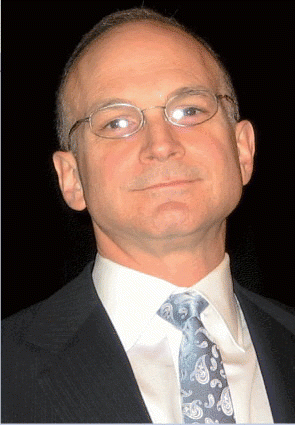Predominant infiltration of T cells, especially CD+ T cells, could be a key component underlying the pathogenesis of nasal polyps, he said.
Explore This Issue
October 2009 There is a lot of subclinical disease. We just don’t have good epidemiological data. But if I had to guess, I would say most likely the incidence of nasal polyposis is on the rise.
There is a lot of subclinical disease. We just don’t have good epidemiological data. But if I had to guess, I would say most likely the incidence of nasal polyposis is on the rise.–Robert Kern, MD
His group found that oral steroids help with epithelial repair in nasal polyposis, with upregulation of the AP-1 gene network (Li C et al. Thorax 2009;64:306-12).
In samples stained for the c-Jun protein, which is involved in creating AP-1, there is a clear benefit from gluticosteroid treatment. After treatment, Dr. Wang said, we really see this restoration of c-Jun protein. You see the structure, which is much better, a little bit recovered and improved.
Inherited genetic variation appears to be critical but yet still largely unexplained, Dr. Wang said in his presentation. Identifying the causal genes and variants in nasal polyposis is important in the path toward improved prevention, diagnosis, and treatment of nasal polyps.
Our data suggest that AP-1 and its related gene network are central molecular effecters of epithelial damage and repair, which can be modulated by glucocorticoid treatment, he continued. We hypothesize that these immunoregulatory and remodeling effects elicited by steroids might be, at least in part, mediated by the AP-1 gene network.
Samter’s Triad
Jan Gosepath, MD, of the Department of Otolaryngology-Head and Neck Surgery at the University of Mainz School of Medicine in Germany, talked about advancements in treating Samter’s triad, the condition involving asthma, aspirin sensitivity, and polyposis-which, he said, can have broader implications.
It is more about eicosanoid imbalance and it’s probably not limited to this rather small subgroup of patients really presenting with a clinical triad, but really spreads to the population of patients with nasal polyps in general, he said.
Dr. Gosepath touched on the apparent importance of growth factor, which is expressed in large amounts in polyposis. Cyclooxygenases-1 and -2 regulate growth factor at two different receptors: Cox-1 regulates permeability in microvascular endothelia, and Cox-2 regulates angiogenesis. In polyposis, Cox-2 is downregulated, leaving an interesting possibility, Dr. Gosepath said.
Putting all this information together-strong expression of the growth factor, the downregulation of cyclooxygenase-2, and the resulting (excess) of cyclooxygenase-1-one would hypothesize that this permeability effect of the growth factor might contribute to that typical clinical picture that we see in nasal polyps-and this being a pathway that might be one of the common denominators in immunology of chronic respiratory inflammation.
Leave a Reply